
Focusing the Project
IT services is a competitive field populated with companies that all deliver important online and call center support to a variety of customers. Most IT services businesses come to realize that their clients have choices and, within the same pricing range, they gravitate to the support organization where the service is best.
In this case study of an IT services business, benchmarking helped quantify what the business already knew – its competitive position was not totally secure. There are a number of ways the company might have responded to the challenge. While the company had built up a reasonable capability in Six Sigma, its management realized improvement was not as simple as forming a project team and turning them loose on the problem. Senior managers had learned that an important part of their responsibility as leaders is to find the issues that are well-enough defined and of a scope to be suitable for a Six Sigma DMAIC project team to take on.
After working through the benchmarks and other data and with the help of a Black Belt, they were able to distill enough clues and evidence in the top-level industry figures to select a DMAIC project they could sponsor with facts and supporting data.
Customer Satisfaction and Business Growth
Industry data was purchased from a clearinghouse that gathers a number of measures about customer satisfaction and call center technical and business performance. Comparing their company to the benchmark average and to a select best-in-class group, the company’s management team could see that customer satisfaction with their support services (gathered by an unbiased industry source) was just average or a bit below.
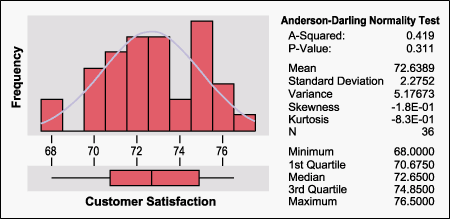
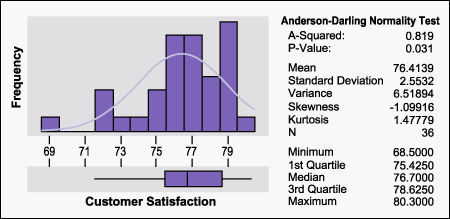
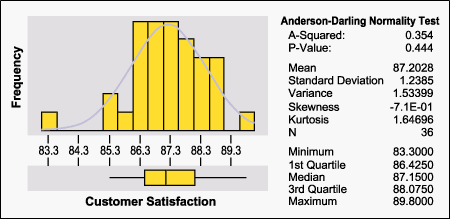
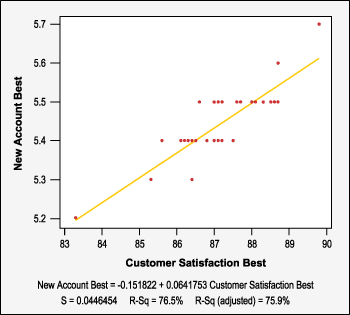
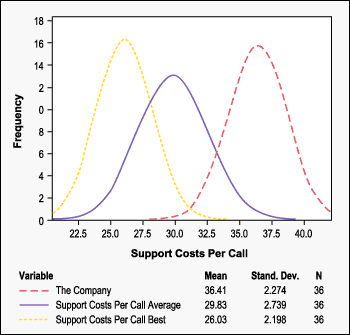
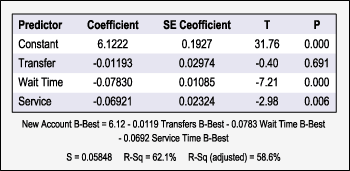
The comparison of the company’s customer satisfaction ratings (73 percent on a 100 percent standardized score), with the “average” companies in the same sector (76 percent) and “best-in-class” competitors (87 percent) showed management it had work to do.
The evidence also supported the important business contention that customer satisfaction (CSat) can be a driver of new account growth. Figure 4 illustrates that the range of customer satisfaction ratings for best-in-class competitors tracked with about 75 percent of the changes in new account growth. That was evidenced by the R-sq. value in the linear regression that was plotted. Senior managers knew that the relationship didn’t “prove causality” but, together with their business sense, they saw this as an indicator that customer satisfaction shows up on the bottom line.
Support Costs Per Call, Per Client
The benchmark data indicated customer satisfaction and business growth do not have a direct relationship to support costs per call. So the companies with the best customer satisfaction and best business growth do not spend the most on support costs per call. In fact, the support costs of $26 per call for the best companies and $30 for the average are lower than the case study company’s cost per call of about $36 (Figure 5).
A model was built to check the feasibility of focusing a DMAIC project on call center service measures (Figure 6). In the figure, the Y, or NewAcct, is new account growth during the benchmark period (as a percent of sales). The Xs are:
Transfer = Average number of transfers (to different agents and help systems) during a service call.
Wait Time = Average wait time during a service call.
Service = Average service time during the call (the time spent getting the answer to the question, problem solving advice, etc.).
Obviously the company would like to have seen a better model-fit than the 62 percent R-Sq seen here. Realizing, though, that many factors play into account growth, the senior leadership felt that the model showed enough linkage to the process factors that pursuit of the project was feasible.
Since the company’s senior managers had ready access to wait time benchmark data, they checked their company’s performance against the industry (Figures 7, 8 and 9).
The wait time review indicated that, indeed, the company was behind the industry norms. This, and the model indication that wait time could be an influential factor in customer satisfaction and new account growth (Figure 5), helped the senior managers see that a DMAIC team focused on improvement in this area could be worthwhile.
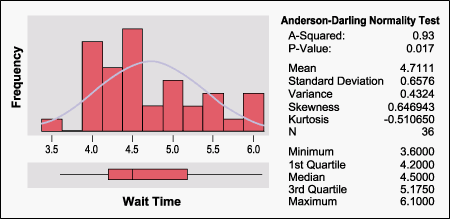
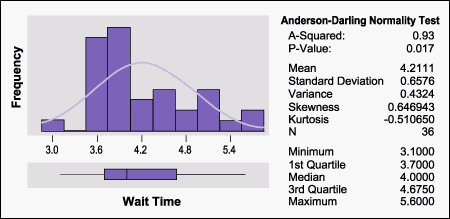
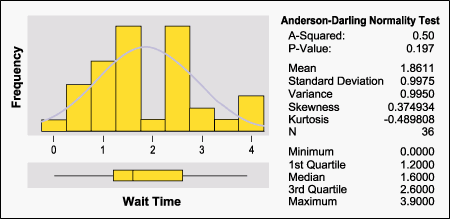
The company could see a strong indication that a DMAIC project to reduce support costs should be quite doable – and should return significant dollars to the bottom line. Management also could see that the DMAIC team should look for the improved customer experience connected with reduced wait times and service times to improve new account growth – bringing dollars to the top line.
The company assigned a Champion from its leadership team to take responsibility for the new project and identify a team leader and key team members. The team was given its top level goals and scope – to reduce support costs while improving new account growth. The work with the benchmark data was helpful in orienting the team to the project rationale. The team began working on their project charter.
Part 2 is about the project charter and the Define phase.